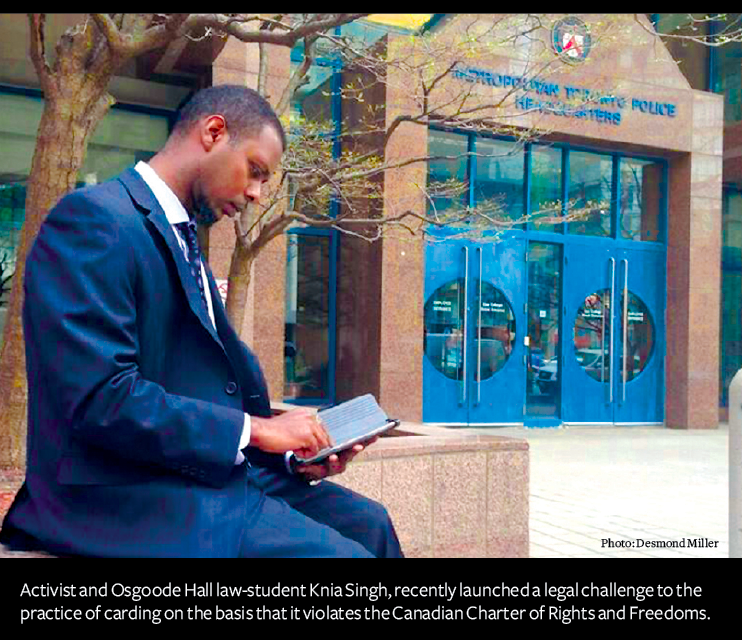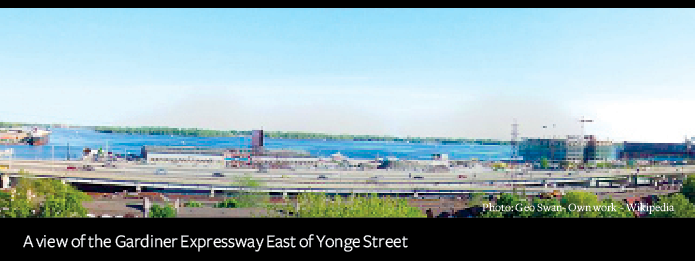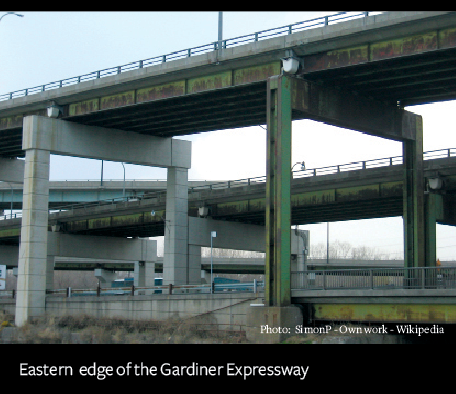Plenty of Canadians are celebrating that Stephen Harper’s autocratic and malicious rule has finally come to an end, and their sentiments are perfectly understandable.But I hope those enthusiastic about the words “Prime Minister Justin Trudeau” will try to understand why some of us don’t feel like celebrating today, and why the defeat of the Harper Conservatives by the son of former Prime Minister Pierre Trudeau rings hollow.The Liberal campaign embraced a sprightly lexicon of positivity, unity, and tolerance in contrast to a Conservative campaign built on fear and race-baiting. But their parliamentary caucus voted for Harper’s absurd “Zero Tolerance for Barbaric Cultural Practices Act” only a few short months ago. And they supported (and will not repeal) Bill C-51, which risks criminalizing people who protest oil pipelines and threatens artistic expression.Behind the selfies and the carefully staged theatrics, behind the vague but flourishing invocations of “hope” and “change,” behind the crowds of grinning patricians, behind the formless nostalgia for ’60s Trudeaumania, many of us see a politics as calculating and ultimately uninterested in social justice as that which today’s liberalism sets itself against.In many parts of the country on October 19, environmentalists, trade unionists, and progressives were unseated in favor of corporate technocrats. The business of hyper-professionalized politics — momentarily disrupted by a new political dynamic — will now reassert itself with a vengeance.The new government is going to temporarily invest billions in new (though largely unspecified) infrastructure, after which it will make billions in (also unspecified) cuts. It will not create any new social programs, and has instead promised to adopt a means-tested approach to social policy that simply helps some low-income earners better navigate unjust market structures with bigger checks than they were getting before.It will not set targets to reduce greenhouse gas emissions (because, in Trudeau’s words, “what we need is not ambitious political numbers”).It will almost certainly finalize a trade deal that will decimate what remains of manufacturing in Canada’s largest province, undermine Canadians’ privacy online, make life-saving drugs unaffordable by creating a global cartel for pharmaceutical giants, and erode the country’s democratic sovereignty by enabling multinationals to sue elected governments over laws and regulations they dislike.Throughout its entire democratic history, Canadian politics has oscillated between two parties that do not seriously challenge the status quo or the injustices it permits. Occasionally goaded by popular movements, they have both been compelled, particularly during minority parliaments, to make concessions while preserving the fundamental contours of the political order.Against this a third current, born from Methodist social gospel and the labor mobilizations of the nineteenth century, has always insisted that fundamental change is necessary to build a truly just society. It was this ethos that gave us Medicare — an institution built from the ashes of war and depression on principles of universalism and social solidarity. Neither sweeping platitudes nor bureaucratic conservatism will ever deliver us social progress of this kind, eradicate poverty, or save the environment from the extractive economic structures that degrade it every day.Despite the palpable optimism throughout much of the country last month, many of us cannot read a return to the historic two-party dynamic as anything other than a setback, and a major one.It’s time we stopped marginalizing social justice, or patronizingly relegating it to the fringes. Achieving social progress requires more than just a perpetual return to the traditional, professionalized politics that continues to leave one in seven Canadians in poverty, tolerates people having to sleep on the streets, and allows thousands of children to wake up hungry and badly housed every single day in one of the richest societies in the world.We have to demand better. And plenty of us believe and hope that, one day, we really will.**This article was originally published in: https://ricochet.media/en/690/why-even-harpers-defeat-rings-hollow
Because I am a girl: changing how I view school
 As a girl, sometimes it can be very hard to learn in school. I’ve struggled in school with my academics. In grade 6, I started going to tutoring at More Than Marks tutoring and they helped me to study more. I knew that if I was going to grade 7, something would have to change. Since tutoring, I’ve seen a drastic change in my academics as well as my socializing.I went from being a girl who was just getting by in school to getting A’s on my test and also being student of the month. I personally realized that it’s not just about doing the work or practicing, it’s really about taking the responsibility to say “Yes, I want to learn”. I can make my parents proud by achieving more in school and in life, which leads to success.
As a girl, sometimes it can be very hard to learn in school. I’ve struggled in school with my academics. In grade 6, I started going to tutoring at More Than Marks tutoring and they helped me to study more. I knew that if I was going to grade 7, something would have to change. Since tutoring, I’ve seen a drastic change in my academics as well as my socializing.I went from being a girl who was just getting by in school to getting A’s on my test and also being student of the month. I personally realized that it’s not just about doing the work or practicing, it’s really about taking the responsibility to say “Yes, I want to learn”. I can make my parents proud by achieving more in school and in life, which leads to success.
Some girls like me may think that they can’t get good grades and improve in school but if you try your hardest you will get to where you want to go. By simply asking for help when needed you can help yourself and others. For example, my family and friends have made me feel more confident about myself and they have made me feel proud. Tips that I’ve personally used are: hanging around responsible people and being respectful to others. Also, it’s very helpful to listen in class and pay attention so that you don’t fall behind. A quote I made up for myself was, “Fill up your car with hope, motivation and courage and then start driving and you’ll get to your destination!”
Dufferin Finch BIA well on its way to new prosperity

 The Keele Street and Finch Avenue West intersection is fast being transformed to a vibrant, exciting hub of economic and urban activity. We know about the new, to-be-opened-in-2017 Finch West Subway Station, as well and the upcoming Finch West LRT, to start construction in 2017 with completion in 2021. This intersection is a main gateway to the Finch Dufferin Business Improvement Area (BIA). The ground-breaking on September 17, 2015 of the attractive, 8-storey 165,000 sq. ft. professional and medical centre, the University Heights Professional and Medical Centre, at 35 Tangiers Road at the south-east corner with Finch Avenue West demonstrates that the Dufferin Finch BIA is well on the way to revitalization and new prosperity. It shows how private investors are betting on Finch Avenue. It is worth noting that 35 Tangiers Road will be a nice place to work, get medical and other help, or shop (there will be retail on the ground floor). The building will have the latest in environmental sustainability and efficiencies (including a green roof). Its 89 units will have an AAA office space designation with a 250 spaces underground garage. This is a change to the type of development that we have seen in the area, and perhaps the first of many new things to come. The fact that Keele and Finch is destined to be an exciting mixed use, urban hub should not be surprising though. The public transit improvements are complemented by Canada’s 3rd largest post-secondary institution at York University to the north and Canada’s first completely digital Humber River Regional Hospital to the South. There is also the massive changes that will be made to the Downsview Park once that takes final shape. The 2,500 businesses and 32,000 workers of Dufferin Finch BIA district will be affected by these changes and so will the neighbouring communities. It is an exciting opportunity to build a better community.By: Joe Pantalone
The Keele Street and Finch Avenue West intersection is fast being transformed to a vibrant, exciting hub of economic and urban activity. We know about the new, to-be-opened-in-2017 Finch West Subway Station, as well and the upcoming Finch West LRT, to start construction in 2017 with completion in 2021. This intersection is a main gateway to the Finch Dufferin Business Improvement Area (BIA). The ground-breaking on September 17, 2015 of the attractive, 8-storey 165,000 sq. ft. professional and medical centre, the University Heights Professional and Medical Centre, at 35 Tangiers Road at the south-east corner with Finch Avenue West demonstrates that the Dufferin Finch BIA is well on the way to revitalization and new prosperity. It shows how private investors are betting on Finch Avenue. It is worth noting that 35 Tangiers Road will be a nice place to work, get medical and other help, or shop (there will be retail on the ground floor). The building will have the latest in environmental sustainability and efficiencies (including a green roof). Its 89 units will have an AAA office space designation with a 250 spaces underground garage. This is a change to the type of development that we have seen in the area, and perhaps the first of many new things to come. The fact that Keele and Finch is destined to be an exciting mixed use, urban hub should not be surprising though. The public transit improvements are complemented by Canada’s 3rd largest post-secondary institution at York University to the north and Canada’s first completely digital Humber River Regional Hospital to the South. There is also the massive changes that will be made to the Downsview Park once that takes final shape. The 2,500 businesses and 32,000 workers of Dufferin Finch BIA district will be affected by these changes and so will the neighbouring communities. It is an exciting opportunity to build a better community.By: Joe Pantalone
Yet Another Consumer RIP OFF
 Canadians have a love/hate relationship with health care. We are proud of our universal health care system; in fact we brag about it when we talk to our American relatives. It’s the extra little charges that make us angry. We bristle when the doctor charges us $5 to fax a prescription to our pharmacy or when a podiatrist charges a $95 “new patient registration” fee. But nothing makes us boil more than the creative ways hospitals invent to rip us off. Almost everyone thinks ill of outrageous hospital parking fees and the myriad of extra charges like telephone rental fees they tag onto your hospital bill. Here is another one that you probably haven’t thought about. I’m an insulin dependent diabetic. One night before going to bed I took a triple dose of the wrong insulin. The paramedic sent by 911 suggested he take me to the Humber River Hospital emergency where they could monitor my blood sugar throughout the night. Two weeks later I received a bill from the hospital for $45 for ambulance service. Now I happen to know that ambulance service is provided free of charge by the City of Toronto to Toronto residents. The cost comes out of property taxes. I ignored the bill. A month later I received a second invoice so I wrote to the hospital: The hospital responded by sending me a copy of the original bill with the words “AMBULANCE SERVICE” emphasized. I wrote back to the Patient Accounts department.
Canadians have a love/hate relationship with health care. We are proud of our universal health care system; in fact we brag about it when we talk to our American relatives. It’s the extra little charges that make us angry. We bristle when the doctor charges us $5 to fax a prescription to our pharmacy or when a podiatrist charges a $95 “new patient registration” fee. But nothing makes us boil more than the creative ways hospitals invent to rip us off. Almost everyone thinks ill of outrageous hospital parking fees and the myriad of extra charges like telephone rental fees they tag onto your hospital bill. Here is another one that you probably haven’t thought about. I’m an insulin dependent diabetic. One night before going to bed I took a triple dose of the wrong insulin. The paramedic sent by 911 suggested he take me to the Humber River Hospital emergency where they could monitor my blood sugar throughout the night. Two weeks later I received a bill from the hospital for $45 for ambulance service. Now I happen to know that ambulance service is provided free of charge by the City of Toronto to Toronto residents. The cost comes out of property taxes. I ignored the bill. A month later I received a second invoice so I wrote to the hospital: The hospital responded by sending me a copy of the original bill with the words “AMBULANCE SERVICE” emphasized. I wrote back to the Patient Accounts department. 
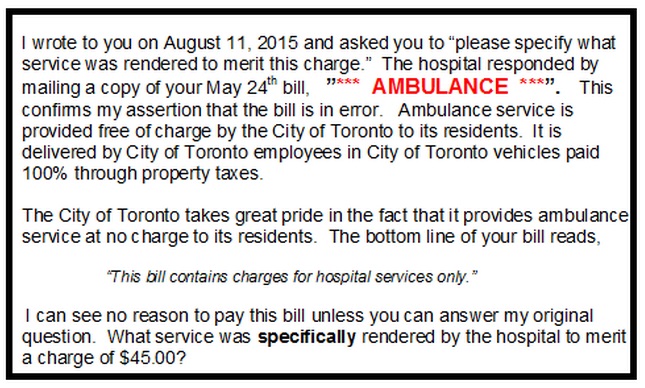 Now, as Prime Minister Harper is fond of saying, “let me be clear about this”. I could pay the bill and my Manulife supplementary Insurance policy would reimburse me the $45. It’s not so much the money as the principle. I will not pay it because; having served on the City’s Committee that provides ambulance services I recognize it for the rip-off that it is. It’s not just the Humber River Hospital; all the Toronto hospitals do it. The hospitals get away with it because most people pay it. They don’t recognize it as the boondoggle it is.Does the hospital have the legal authority to levy this charge?Yes they do.There is a little known Ontario regulation that permits them to do it. But what is worse the Ontario Government is a partner in this deception and the Minister of Health has never been able to explain why. You see, the hospital keeps about half the money and sends the balance to the province. I’m prepared to go to small claim’s court and defend my position. The hospital provides no service whatsoever for this fee. If I had arrived at the emergency department in a taxi or by TTC they would have no excuse to charge it.
Now, as Prime Minister Harper is fond of saying, “let me be clear about this”. I could pay the bill and my Manulife supplementary Insurance policy would reimburse me the $45. It’s not so much the money as the principle. I will not pay it because; having served on the City’s Committee that provides ambulance services I recognize it for the rip-off that it is. It’s not just the Humber River Hospital; all the Toronto hospitals do it. The hospitals get away with it because most people pay it. They don’t recognize it as the boondoggle it is.Does the hospital have the legal authority to levy this charge?Yes they do.There is a little known Ontario regulation that permits them to do it. But what is worse the Ontario Government is a partner in this deception and the Minister of Health has never been able to explain why. You see, the hospital keeps about half the money and sends the balance to the province. I’m prepared to go to small claim’s court and defend my position. The hospital provides no service whatsoever for this fee. If I had arrived at the emergency department in a taxi or by TTC they would have no excuse to charge it. 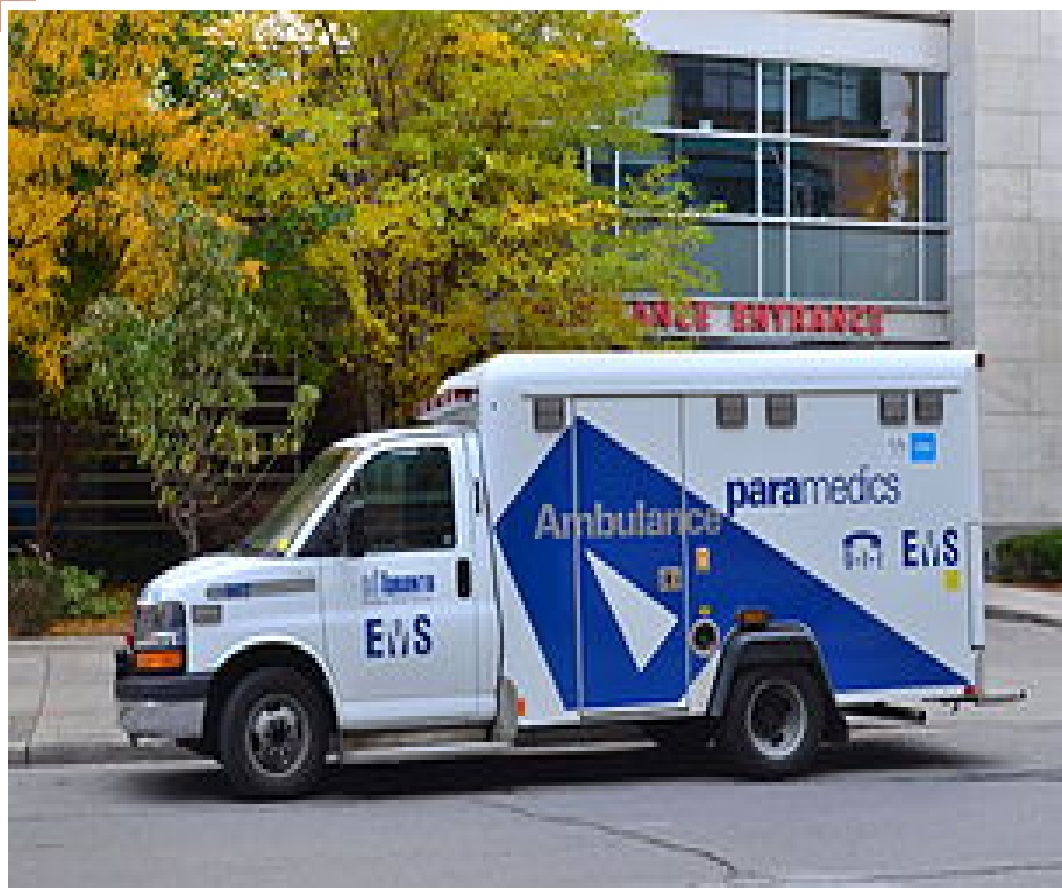 Is it any wonder that fewer and fewer Canadians are reluctant to make charitable donations to hospitals? By: Howard Moscoe
Is it any wonder that fewer and fewer Canadians are reluctant to make charitable donations to hospitals? By: Howard Moscoe 
The Senate in Canada: A Throwback that Needs to be Abolished
The Senate in Canada: A Throwback that Needs to be Abolished
Read moreWhat Would a $15 Minimum Wage Mean to You and Your Family?
What would making $15 an hour mean for people in our community? For many, it could mean the difference between poverty and a decent wage.
Read moreSupport Your City and Cut Your Utility Bill, All at the Same Time!
The more you recycle the less trash you have, and the smaller and less costly your garbage removal becomes. Below are the new yearly rates you pay for garbage collection, which were increased this year.
Read moreChallenging “Carding” in Toronto: A Matter of Canadian Rights and Freedoms
By Desmond Miller
Few stories have gained as much media attention lately as the ongoing developments around the Toronto Police Services practice of “carding”. To focus on some of the main issues, and gain some clarity, I spoke with activist and Osgoode Hall law-student Knia Singh, who recently launched a legal challenge to the practice of carding on the basis that it violates the Canadian Charter of Rights and Freedoms.
Desmond Miller: For those who do not know, what is “carding”?
Knia Singh: Carding is the random, targeted stopping of people, who are not involved in criminal activity but are asked by police to provide personal information (for example, their name and address). That information is then placed in a police database.
DM: How did you become involved in speaking out against carding?
KS: I first became involved in speaking about carding in September 2013 when I, and a friend, Chris Williams, were featured in a story in the Toronto Star. I had no criminal record but when I filed a Freedom of Information request [with the Toronto Police] I received a fifty-page file. Ten pages was information gathered from contact cards. Much of the information was incorrect, such as my height and weight, even my place of birth, which was listed as “Jamaica” despite the fact that I was born in Canada. I am innocent, yet I have a record.
DM: What do citizens need to know about carding and why is it an important issue?
KS: Innocent people should never be stopped and intimidated or made to feel like they are forced to answer questions. The practice of carding could lead to a false charge and further complications in police interactions. Furthermore, it is important, in a free society, for Canadians to not have their rights violated. Carding violates Charter rights sections 7, 8, 9 and 15. And, it is targeted racial profiling that has a disproportionate effect on Black and Brown people.
DM: How can the practice of carding be challenged?
KS: If a citizen is stopped by police, it is important for them to know their rights and be polite and cooperative – even if their rights are being violated. Being rude could lead to other problems. If a citizen is carded, they can file a Freedom of Information request, challenge the information that police have and/or make police complaints.
DM: What do you think about the most recent developments regarding carding?
KS: Some positive steps forward have been made, including Mayor John Tory’s change in his stance on carding and the institution of the April 2014 policy (on carding), which limits some Charter rights violations. I am disappointed that this took so long and that (former Police Chief Bill) Blair did not put in this policy. I am also glad that the province (of Ontario) is stepping in and is developing a policy on carding and street checks.
What are your experiences with carding? E-mail us your stories at :
info@downsviewadvocate.ca
Gardiner Expressway Should be a Park
By Julian Heller
Great cities have great parks. New York. London. Paris. Toronto?
In my opinion the recent debate about tearing down a short stretch of the Gardiner Expressway in downtown Toronto missed the point entirely.
While traffic on the portion in question from Jarvis Street to the DVP has very low numbers of vehicles, and the time for travel will only be slightly affected, hardly anyone talked about the great possibilities which could be realized, for the benefit of generations to come.
Commuters from northwest Toronto would almost never actually use that stretch of roadway so what should citizens be asking for?
Like Downsview Park, an historic opportunity to create a linear park from the Don River to the Humber River where the ugly elevated Gardiner now stands, would give all of Toronto a world-class park connecting the city to Lake Ontario.
Montreal built a tunnel for a highway right under downtown many years ago. That city has also built subways year after year. It, of course, has the park on top of Mount Royal. Never mind the Leafs-Habs “rivalry” – this is about city-building.
There are several long standing design ideas for Toronto’s solution which have been floating around since the 1990’s, but no one has had the courage to make it happen.
Here’s how in 4 steps:
1.Build a tunnel under the Lake, or drop a pre-cast tunnel on the lake bed to accommodate vehicle traffic from Park Lawn to the DVP.
2.Once the tunnel is ready to take the traffic flow, demolish the Gardiner.
3. Open excavate a subway line to extend the downtown relief line westward along the path of the Gardiner.
4. Put a park on top. This would be at ground level.
The cost? Priceless. A gem for the ages, many construction jobs, and a much needed subway.
As they say in the hockey world, “Get’er Done!”
What would you like to see happen with
the Gardiner
Expressway?
E-mail us your thoughts at
info@downsviewadvocate.ca
Brutality Apologists On Social Media Distract the Debate Away from Empathy for Victims
By Natalie Hundt
The debate on social media ensued when a violent video from a pool party in McKinney Texas went viral. The McKinney police department also saw the video and suspended officer Casebolt promptly for excessive force.
The video shows Officer Casbolt pulling 15-year-old Dajerria Becton by her hair and slamming her down onto the ground. The girl, an invited guest at a pool party, wearing nothing but a bikini, cried out “Call my momma.”
Reflexively, two boys, (also in swim trunks) run to assist the female victim of the excessive force, but just as reflexively the boys jump and run as officer Casebolt draws his gun at the two young people, as they got closer. Becton now sitting on the ground, is yelled at by Casebolt to sit and although she remains seated, Casebolt pulls her up and slams her face down onto the ground again. McKinney Police Chief Greg Conley stated “The actions of Eric Casebolt are indefensible.”
Police were called after a fight broke out between a white woman, Tracey Carver-Allbritton, who was yelling racist remarks at the black members of the community, and their guests at the community pool. Carver-Allbritton was the first to physically aggress the black 19 year old, who stood up for herself and her friends.
According to Dallas Morning News, Carver-Allbritton has since been placed on administrative leave, by her employer Corelogic. When the police arrived, they forced the black bystander youths to be detained and others to leave.
That is the back story, also disturbing is the debate on social media that followed.
A young girl gets viciously attacked, yet so much of the conversation on social media, is dragged into how the officer felt at the time, what were the officers challenges, whether or not critics of individual officers are generalizing, what happened long before the attack between other people etc.
While these are all related points, the one thing getting lost (I believe deliberately by brutality apologists) is what this girl (and the other victims) went through.
That is the pinnacle of this outrage after all. How must this have traumatized her? How intense must her fear have been? How degrading was it to not be clothed and expected to leave without your belongings? How disturbing is it to attend a party and be told to go back to section 8. How must the hostess mother feel after working hard to provide a nice home in a “nice” neighbourhood and then have racial slurs hurled at her child’s guests? How hurtful is that? How infuriating was it for the teen who defended herself verbally against those slurs and then be slapped? How unfair does it feel to defend yourself from the slap only to have police go after your friends while the white people get to stand by freely and watch? How much strength does it take to carry on in a society like this? What humiliation and possible dangers might the youths have faced, leaving the neighbourhood without clothing? What were the pressures on the youths preventing them from leaving. When did it become unreasonable to tell the police forcing you to leave that you need your belongings, when there was no imminent threat that would demand evacuation?
How do high school teachers manage similar situations every day without physical force and profanity. Did officer Casebolts profanity diminish respect? Were other officers having trouble with a lack of respect? On the video the other officers are having a much different interaction with the youth. What could the abuser, Casebolt have done differently, not what could the victims do differently.
Not enough of the conversation is about the effects on the victims because some people keep distracting away from empathy, instead assassinating everyone’s character, except for (or more than) the violent officers character.
The victims and the critics should not be the ones defending themselves. You don’t have to be perfect not to deserve an attack, nor do you have to be perfect to critic heinous acts. But when you commit unjust attacks and disgrace the badge you deserve public outcry and legal consequences.
There is no question whether the officer has committed unjust attacks and disgraced the badge. That was settled when he was suspended by authorities.
Share your thoughts about the incident that took place in Texas,by emailing us at:

